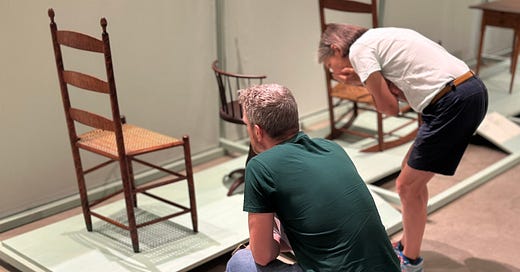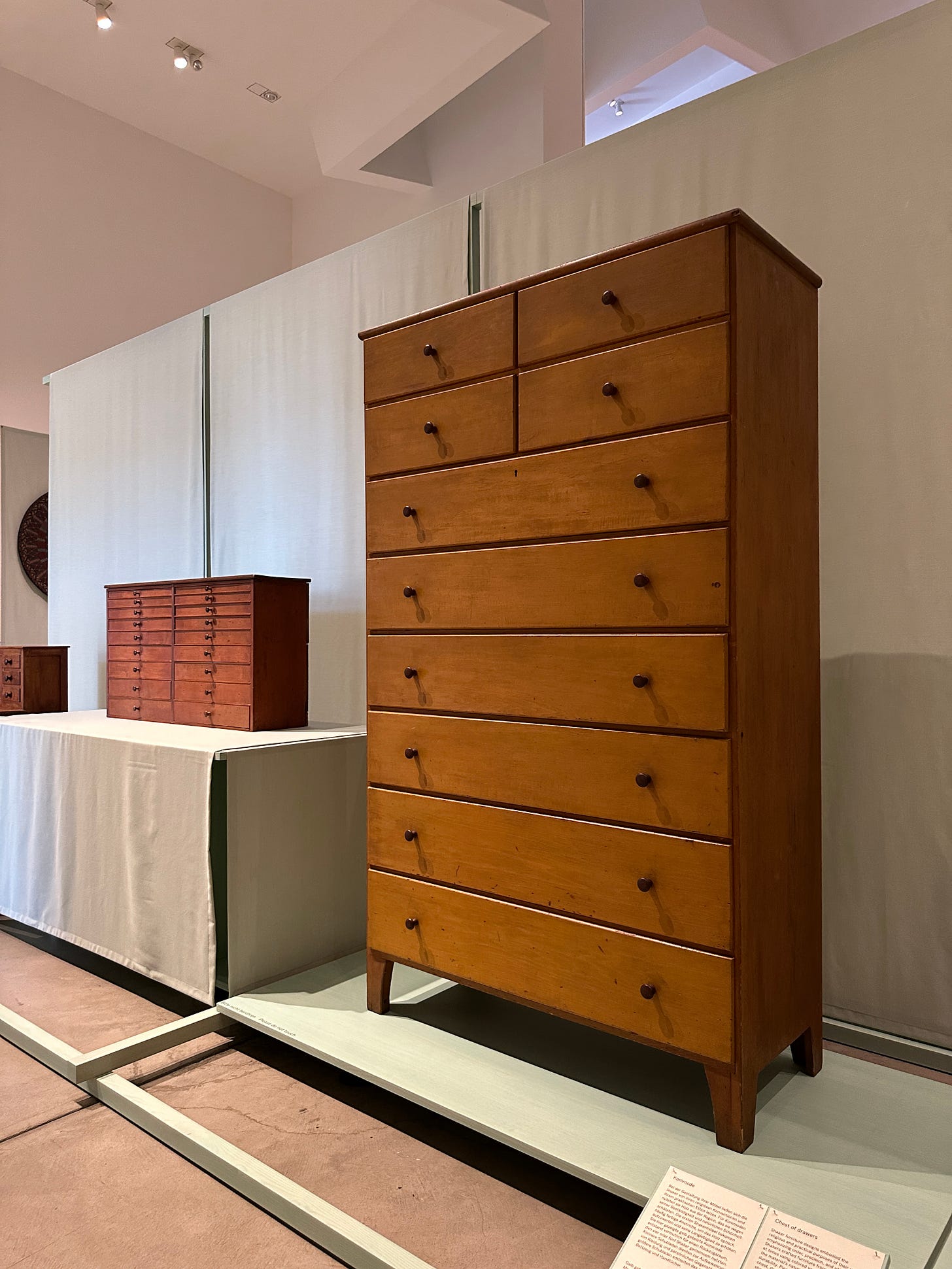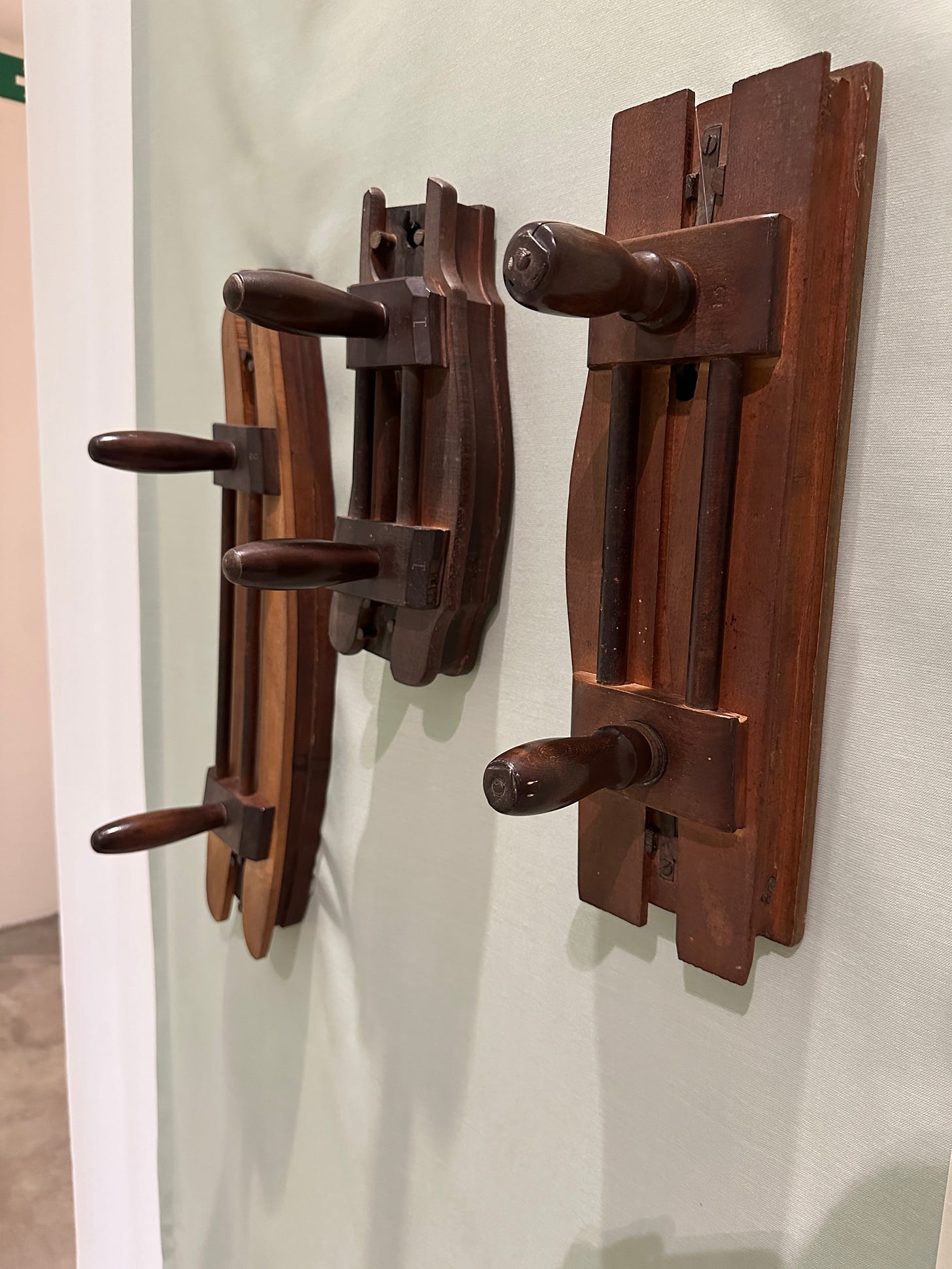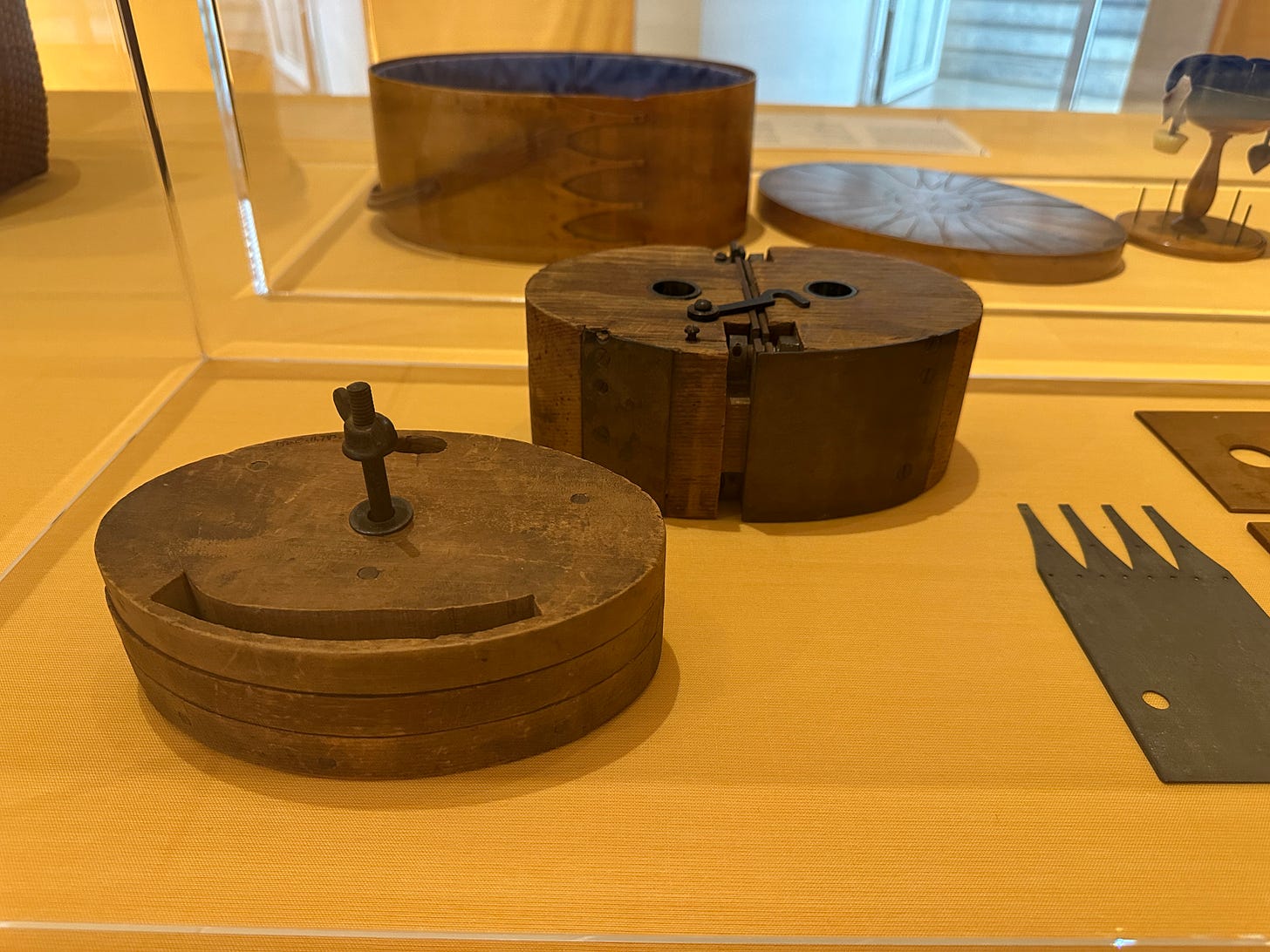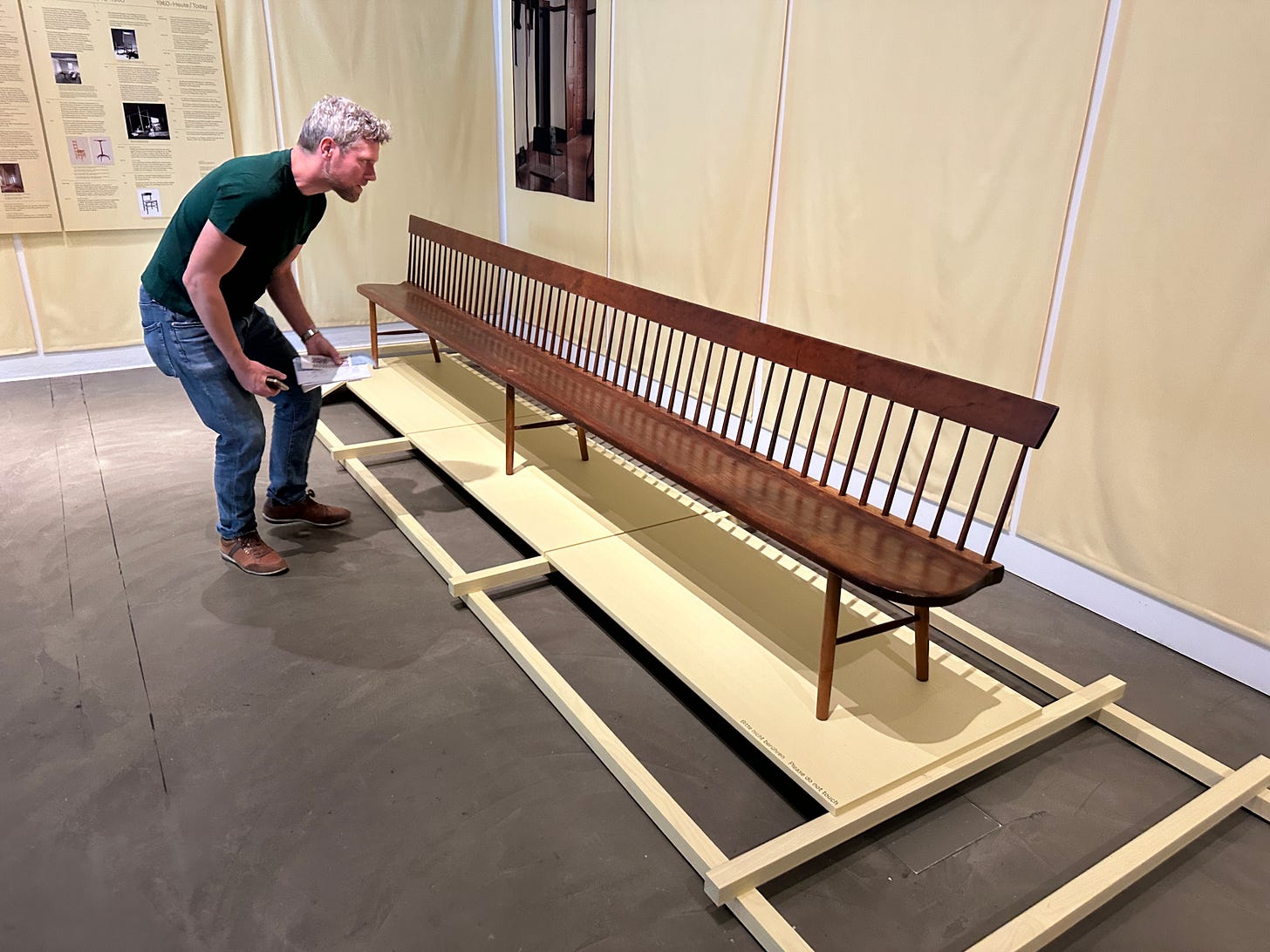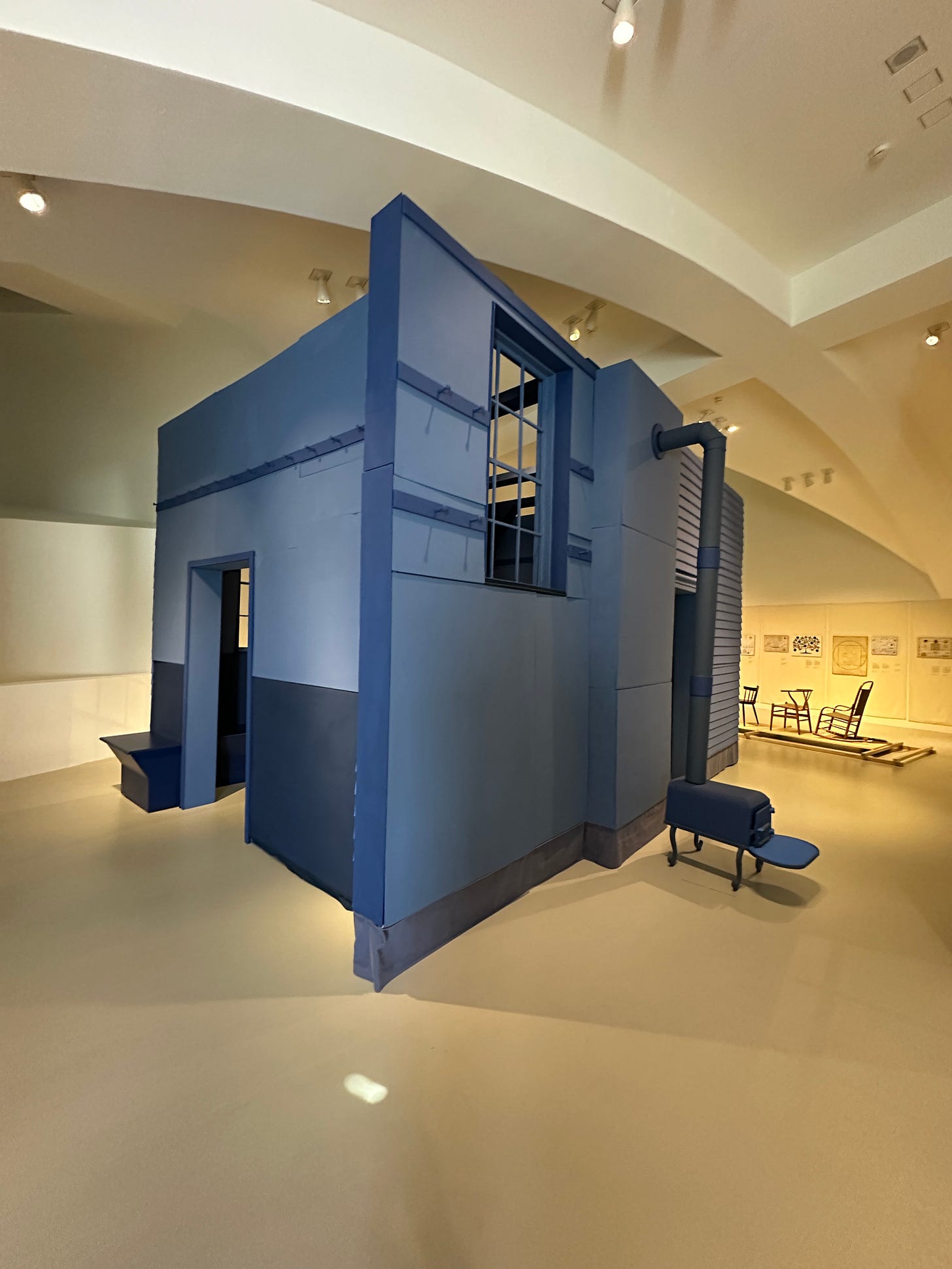For the most part, many Europeans are unfamiliar with the story of the American Shakers and their approach to furniture design. So I was both delighted and surprised to see a new exhibit open about the Shakers at the Vitra Design Museum, a German factory and monument museum to modernism.
The exhibit, “The Shakers: A World in the Making,” runs until Sept. 28 of this year and is well worth a visit for anyone who wants to understand one of the most important furniture movements in the United States. Shaker aesthetics touch so many facets of modern American life (from seeds to brooms to chair design) that we sometimes become blind to it.
The Vitra exhibit is housed in a modern satellite building that is stark white, inside and out, with rooms and walls that are odd shapes and sizes (in other words, your typical architect-designed modernist structure).
The juxtaposition of the warm wood tones and white walls might have been jarring, but the exhibit handles this problem with colored fabric screens that create 90° walls and appropriate surfaces to display rectilinear antique furniture.
Most of the objects come from the Eastern Shaker colonies, so it was nice to see some pieces that were “new” to my eyes. But I will admit it was odd to see Shaker objects outside of their buildings, which is how I am accustomed to seeing them. This is my problem, not the exhibit’s.
There are a lot of highlights for furniture makers.
The exhibit shows jigs, fixtures, tooling and a cobbler’s bench that are fascinating. The three chair-making jigs flummoxed me for a while until I realized they were for pattern-routing chair parts, such as rockers and backsplats.
The jigs were made with the same care and attention as the furniture. They were surprisingly clever and beautiful, right down the turned wooden handles used to secure blanks in the jigs.
There also are jigs on display that the Shakers used to mass-produce their oval boxes, including forms that could be easily collapsed and removed from the boxes after bending them.
The chairs they display are fine examples, including some that are painted or made from highly figured woods. Plus, of course, there were some breathtaking storage pieces, including a tall chest that is bigger than most cars in Germany.
I was quite curious as to what the European visitors were interested in. So I watched the visitors as much as I admired the pieces.
The biggest draw was the timeline of Shaker history, which explained the religion, how it grew, prospered and finally declined to almost nothing today.
After that, the visitors were drawn to the major furniture pieces, plus the brooms and the massive meeting hall bench on display in the first room (I admit, I spent some serious time with that bench myself).
The parts of the exhibit that didn’t work for me were the contemporary European artists who were asked to reflect upon or reinterpret Shaker ideals or pieces using their own sensibilities. The space for the contemporary multimedia piece on dance could have been much utilized to show images and recordings of Shaker dance and hymns (a huge part of Shaker life).
Plus, and I know I sound like a jerk for saying this, the contemporary exhibit on carved wooden spoons didn’t thrill me. Many of the spoons were intentionally carved with holes in the bottom, making them non-functional.
Were the broken spoons a contrast and comment on the Shakers insistence on utility? The display is silent on this point. And so I could only say: Nice spoons overall. Maybe don’t carve so deep next time.
Keep reading with a 7-day free trial
Subscribe to The American Peasant to keep reading this post and get 7 days of free access to the full post archives.

